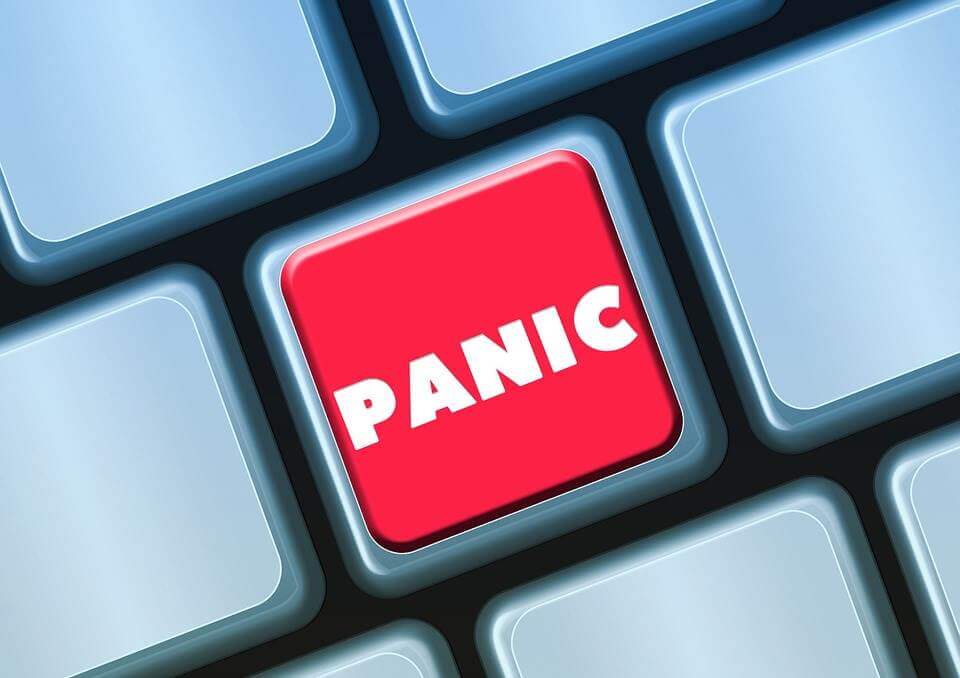 This bit starts with the ER visit that came at the tail end of my first-ever panic attack, and ends with my second-ever panic attack:
This bit starts with the ER visit that came at the tail end of my first-ever panic attack, and ends with my second-ever panic attack:-------------------
The ambulance deposited me in the emergency room at Stamford Hospital, where a nurse put me in a robe and ushered me behind a curtain. A doctor put a stethoscope to my chest, an EKG tech wired me up and recorded my heart’s electrical rhythms, and I was discharged with a clean bill of health. “There’s nothing wrong with your heart,” the doctor said.
Nothing wrong?
My parents had made the 90-minute drive to the hospital from their home on Long Island, and now they drove me back out onto the Connecticut Turnpike and to the McDonald’s parking lot where I’d left my car. There, my mother joined me in my Ford and my father continued on alone in his Cadillac. During the next 90 minutes, down through Westchester and the Bronx, over the Throgs Neck Bridge, and east to my parents’ home, I must have apologized 25 times for ruining our plans for their 25th anniversary celebration. We’d had a plan, and I’d fucked it up. That was the way I saw it. My mother, God bless her, assured and reassured me. “That you’re okay, that’s what’s really important.”
But I wasn’t okay. I didn’t realize it then, but today I can see, clearly, that I was in a state of shock, that I’d been through a trauma that, strange as it might seem, had had the same effect on me as if I’d been in a car wreck.
Back at home in the city, though, I carried on as though all was normal.
7:15 alarm. Shower, shave, choose a tie from the tie rack. “Good morning” to the doorman on the way outside. Join the herd streaming downstairs to the southbound 96th Street IRT platform. Exit at 59th Street, head west to Madison. Enter the GM Building, push onto the elevator to the 50th floor. Take off suit jacket, start the computer, scan the Wall Street Journal. “Hey, Mike, hey, Jane, good weekend?” Monday at work began uneventfully. To a degree I was just going through the motions, but it wasn’t like I hadn’t done that before at work.
Things were still okay at the end of the workday. Downstairs I made my way east on 59th Street, remembering that just a few months back it would’ve been dark and cold at 5:30, glad for the lengthening days. As I joined the stream of commuters descending from street level to the subway platform, though, my mood shifted. There were too many people, too close to me. This was odd; I’d never found crowds particularly upsetting. In fact, some of my fondest memories involved times I’d been part of the power of crowds, one tiny drop in a tidal pull of energy: in the press of concertgoers immediately in front of the stage, for instance, or with my voice joined with those of tens of thousands of others at hockey and basketball games. I looked to the exit, considering just walking home, the thought defeated by the prospect of navigating the crowd to make my escape. At that moment a push of stale, warm air pushed over the platform from the tunnel to the south, and the train barreled into the station and screeched to a halt.
“Step lively! Watch the closing doors!”
I squeezed my way to the middle of the car, and as the train pulled out of the station, I felt a tiny flutter in my chest, and was immediately swept up in a flood of disturbing thoughts. What if it happens again? What if they were wrong, and there is something wrong with my heart?
The train jostled in the darkness of the tunnel, and I reached for the strap to steady myself. I told myself it wasn’t going to happen again, that I was fine, that I was just still shaken up from my experience the day before on the Connecticut Turnpike. But then I felt a sharp pain in my chest, and no amount of logic could’ve helped me avoid the wave of fear engulfing me suddenly. My heart jackhammered. My breath heaved. My legs felt weak, like they were about to give out. I stared at the advertisement above me for what must have been 10 seconds before realizing that it was one I’d laughed at a hundred times before (“Anal warts? Try LASERS!”), but if I’d opened my mouth in that moment it would have been not to laugh but to scream. This time, I knew, it was for real; I was having a heart attack. I was about to die.
Hardly realizing what I was doing, I made my way through the crowd toward the nearest doors, ignoring the annoyed expressions on the faces of those I was pushing past. Escape: that was my imperative, the thing I wanted with an urgency I’d never felt before. There was no question of taking this subway all the way to 96th Street, my stop. We pulled into 72nd Street, and I was off that train and up on the street in a matter of seconds.
The sidewalks were crowded, but nothing like the train had been, and I felt a great sense of relief, like I’d avoided a cataclysm. Like I’d escaped death. I caught my breath, then began walking uptown. I saw my reflection in the floor-to-ceiling windows of a bank branch. I looked completely normal. It seemed strange, to look normal after what I’d just been through.













